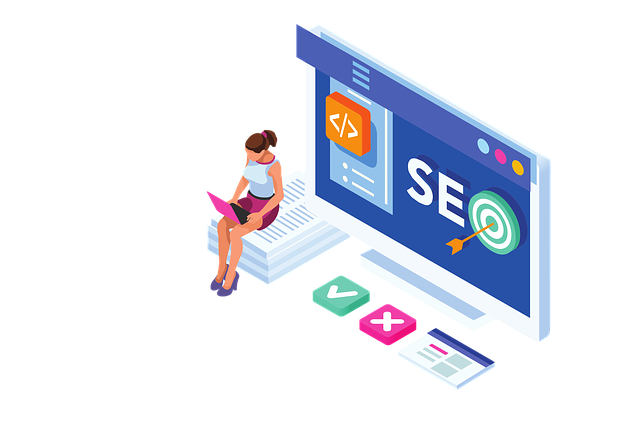Traditional Marketing Strategies
Overview of Traditional Marketing
Traditional marketing encompasses a variety of marketing techniques that predate the rise of digital strategies. This includes offline media such as newspapers, magazines, billboards, television, radio advertisements, and direct mail campaigns. The term “traditional marketing” emerged during the advertising boom of the 1950s, primarily driven by the growing popularity of television (Mailchimp). Despite the growing dominance of digital marketing, traditional strategies remain relevant, particularly for startups aiming to build their initial presence and credibility in the marketplace.
Benefits of Traditional Marketing
Engaging in traditional marketing provides numerous advantages for startups. Below are some key benefits:
| Benefit | Description |
|---|---|
| Simplicity | Traditional marketing offers straightforward methods that can be easier for businesses without extensive digital expertise. It allows for direct communication with target audiences without the complications of digital tools (Mailchimp). |
| Established Effectiveness | Conventional marketing techniques have been tested over time, demonstrating their ability to reach and resonate with audiences effectively (Faster Capital). |
| Wider Audience Reach | Traditional marketing methods can reach diverse demographics, particularly less tech-savvy individuals who may not engage with digital media (Faster Capital). |
| Effective in Multichannel Strategies | Integrating traditional marketing with digital efforts enhances overall marketing campaigns, allowing businesses to engage with customers at multiple touchpoints, creating a more comprehensive marketing strategy (Faster Capital). |
| Cost-Effectiveness | In some cases, traditional marketing can be less expensive than digital marketing alternatives, especially for specific campaigns that leverage local media (Faster Capital). |
In summary, while digital marketing is essential in the modern landscape, traditional marketing continues to play a vital role in the marketing mix for startups. By understanding and leveraging these methods, you can establish a strong foundation for your brand. For further insights on this topic, refer to our sections on traditional marketing channels and traditional marketing tactics.
Importance for Startups
Validating Products and Services
For startups, validating products and services is a crucial step in ensuring market fit. Traditional marketing strategies play a significant role in this validation process. By engaging potential customers through print advertisements or direct mail campaigns, you can gather feedback and insights regarding your offerings. This initial interaction helps in gauging interest and identifying any necessary adjustments to align your product with customer expectations.
According to recommendations, utilizing traditional marketing methods gives startups the opportunity to create interest around their offerings. This proactive approach not only strengthens brand identity but also aids in differentiating your company from competitors.
Generating Brand Awareness
Generating brand awareness is essential for startup success. Traditional marketing techniques, such as print media and local advertisements, can effectively increase visibility within targeted demographics. This form of marketing is particularly beneficial for reaching audiences less engaged with digital spaces, such as older consumers who might prefer traditional media (Design Rush).
Table 1 summarizes the various traditional marketing tactics that can boost brand awareness:
| Technique | Pros | Cons |
|---|---|---|
| Print Advertising | High visibility, local targeting | Declining readership rates |
| Direct Mail | Personal touch, targeted approach | Potentially high costs |
| TV/Radio Ads | Wide reach, memorable impact | Significant startup costs |
Implementing these strategies effectively positions your startup to achieve noticeable brand recognition within the market.
Building Customer Relationships
Building positive relationships with customers is crucial for long-term success. Traditional marketing offers a personal touch that creates lasting impressions. Techniques like community events, printed newsletters, and direct mail campaigns foster interaction, allowing you to establish trust with your audience. Engaging with customers in a face-to-face environment or through personalized correspondence can result in stronger customer loyalty.
These interactions are tangible and memorable, reinforcing your brand’s identity and fostering deeper connections. Additionally, nurturing these relationships can lead to increased word-of-mouth referrals, which are invaluable for startups seeking organic growth.
Understanding the importance of traditional marketing strategies in validating products, generating brand awareness, and building customer relationships can set your startup on a path toward sustainable success. This balanced approach not only enforces your market presence but also ensures that your offerings resonate effectively with your target audience.
Techniques and Methods
Incorporating traditional marketing techniques can be a powerful strategy for startups. Here, we will examine three effective methods: print advertising, direct mail campaigns, and TV and radio advertisements.
Print Advertising
Print advertising remains a cornerstone of traditional marketing. Newspapers, magazines, brochures, and posters are all forms of print media that can efficiently reach targeted audiences. For startups, print advertising provides an opportunity to build brand awareness and directly connect with local consumers.
| Medium | Cost Range | Audience Reach |
|---|---|---|
| Newspapers | $200 – $20,000+ | Local and regional |
| Magazines | $1,000 – $50,000+ | Niche audiences |
| Brochures | $0.10 – $2.00 per unit | Local community |
| Posters | $0.50 – $5.00 per unit | Public spaces |
The effectiveness of print advertising can be enhanced through strategic placements, while the visual impact of well-designed ads can capture attention and drive interest. For examples of traditional marketing strategies, check our article on traditional marketing examples.
Direct Mail Campaigns
Direct mail campaigns involve sending physical promotional materials, such as catalogs, newsletters, or postcards, directly to potential customers. This method can be especially effective for startups looking to create personalized marketing messages.
| Direct Mail Type | Average Cost per Piece | Expected Response Rate |
|---|---|---|
| Postcards | $0.30 – $2.00 | 1% – 5% |
| Catalogs | $0.50 – $3.00 | 1% – 2% |
| Newsletters | $0.20 – $1.50 | 2% – 4% |
Direct mail is often more targeted than digital methods, as you can curate your audience based on demographics and previous interactions. This increases the likelihood of engagement and conversion. For more insights, visit our section on traditional marketing techniques.
TV and Radio Advertisements
Television and radio advertisements offer a broadcast approach to reaching large audiences. Although generally more expensive, these advertisements can provide significant exposure and help establish credibility for your startup.
| Advertisement Type | Cost Range | Typical Audience Reach |
|---|---|---|
| TV Commercials | $1,000 – $5 million | Regional to national |
| Radio Spots | $200 – $5,000 | Local to regional |
While these methods can lead to high visibility, it’s essential to evaluate your budget against your target audience. The impact of traditional advertising strategies, which include these broadcast methods, can be profound if executed correctly. For additional considerations, you can explore the importance of traditional marketing for startups.
Implementing print advertising, direct mail campaigns, and TV and radio advertisements can enhance your startup’s traditional marketing approach, enabling you to effectively build brand awareness and attract new customers.
Challenges Faced by Startups
While traditional marketing can provide substantial benefits for startups, there are significant challenges to consider. Understanding these obstacles is crucial for crafting effective marketing strategies.
Limited Budgets
Startups often operate with tight budgets, making it difficult to allocate significant resources to traditional marketing efforts. The costs associated with traditional advertising methods—such as print ads, TV commercials, and billboard placements—can quickly add up. For many startups, these expenses are not feasible, especially when competing against more established businesses that can easily absorb higher marketing costs.
The following table illustrates average costs for various traditional marketing channels:
| Marketing Channel | Estimated Cost |
|---|---|
| Print Advertising | $1,500 – $9,000 |
| TV Commercials | $4,000 – $100,000 |
| Billboards | $1,500 – $30,000/month |
| Direct Mail Campaign | $0.50 – $2.00 per piece |
Given these costs, startups may need to be more strategic in their choices, potentially opting for more affordable tactics such as community involvement or grassroots marketing to achieve a wider reach.
Audience Engagement
Engaging your target audience through traditional marketing channels can be challenging, particularly in an age where digital marketing has become prevalent. Many potential customers may prioritize online communication methods over offline interactions.
Conducting effective audience engagement requires thorough research to understand customer preferences and behaviors. Startups may find it difficult to gather this information compared to established competitors with existing customer databases. Further, the one-way communication style typical of traditional marketing can limit interaction and feedback from your audience, making it harder to establish connections.
To enhance audience engagement, consider integrating traditional methods with digital strategies, potentially expanding your reach and fostering deeper connections with your target customers. For insights into optimizing this balance, you may explore traditional vs digital marketing.
Measuring Effectiveness
Measuring the effectiveness of traditional marketing efforts poses a significant challenge for startups. Unlike digital marketing, where metrics can be tracked easily (like click-through rates and conversion metrics), traditional marketing lacks straightforward ways to quantify success.
Metrics such as return on investment (ROI) or engagement rates for print ads, TV commercials, or billboards can be ambiguous. Tracking customer responses or sales generated from a specific campaign can demand additional effort and resources, including customer surveys or focus groups.
To address these measurement hurdles, consider establishing clear objectives and using methods such as unique promo codes or dedicated landing pages to evaluate the effectiveness of your traditional campaigns. For insights on traditional marketing techniques and tactics, refer to our guide on traditional marketing tactics.
Acknowledging these challenges can equip you with the insight needed to navigate the complexities of traditional marketing for startups, enabling you to create more focused and effective marketing strategies.
Balancing Traditional and Digital
Integrating traditional and digital marketing strategies is essential for maximizing your startup’s outreach. Both methods have their unique advantages, and finding the right balance can enhance your overall marketing effectiveness.
The Role of Digital Marketing
Digital marketing provides a platform for engaging with a broader audience through various channels including social media, email campaigns, and search engine optimization. As digital marketing commands nearly two-thirds of ad spending (68%), it is evident that businesses increasingly prefer online avenues over traditional methods (Design Rush). Digital strategies enable businesses to collect more accurate metrics for tracking campaign performance, offering better insights into customer engagement and preferences (Mailchimp).
Furthermore, digital marketing techniques such as social media advertising can create highly targeted campaigns that resonate with specific demographics. This matches well with today’s consumer behavior, as customers seek detailed information and active engagement before making purchasing decisions. Digital marketing not only enhances visibility and credibility but also allows businesses to interact with potential customers in meaningful ways, thereby improving the chances of closing sales (Forbes).
Optimizing Marketing Budgets
When optimizing your marketing budgets, it is crucial to assess the effectiveness of both traditional and digital strategies. While traditional marketing can simplify outreach for those unfamiliar with digital tactics, it typically comprises a lower percentage of overall ad spending. Many startups find it beneficial to allocate sufficient resources towards both methods to ensure well-rounded market exposure.
| Marketing Channel | Percentage of Ad Spend (%) |
|---|---|
| Digital Marketing | 68 |
| Traditional Marketing | 32 |
Understanding your unique audience is vital. Start by conducting market research to determine where your customers are primarily engaged. If your target demographic is more active on social media, consider investing more in digital campaigns while still maintaining a presence in traditional media channels.
The current marketing landscape favors an integrated approach. By combining the performance metrics from digital campaigns with the familiarity of traditional marketing, you can create a comprehensive strategy that maximizes reach and effectiveness. For more insights, explore our sections on traditional marketing strategies and traditional marketing channels.
Strategies for Success
Using traditional marketing for startups involves several strategic approaches to optimize reach and effectiveness. Here are key strategies to consider.
Identifying Ideal Customers
Understanding your target audience is crucial. This involves researching and collecting data on customer demographics, preferences, and behaviors. By identifying ideal customers, you can tailor your marketing strategies to fit their needs. Consider utilizing various tools for market research, including surveys, customer feedback, and data analysis.
| Demographic Consideration | Importance |
|---|---|
| Age Group | Different age groups respond to different marketing channels. |
| Location | Localizing your approach can significantly enhance relevance. |
| Interests | Targeting based on hobbies and interests allows for more effective messaging. |
For more guidance on refining your target audience, refer to our article on traditional marketing research methods.
Tailoring Marketing Efforts
Once you have identified your ideal customers, it is essential to tailor your marketing efforts accordingly. This requires customizing your messaging and selecting the most effective channels to reach your target demographic. Startups should consider a mix of traditional and digital marketing techniques to appeal to a broader audience.
By aligning your marketing methods with customer interests, you can increase engagement and conversion rates. As traditional marketing channels can reach a more varied demographic, incorporating methods such as print advertising and community events is beneficial in creating a comprehensive marketing strategy. Explore more about various techniques in our articles on traditional marketing techniques and traditional marketing channels.
Achieving a Balanced Approach
Finding the right balance between traditional and digital marketing is essential for a comprehensive marketing strategy. While traditional marketing allows businesses to effectively reach customers through established channels such as TV and print media (Mailchimp), digital marketing provides the agility and targeting precision required for today’s marketplaces (Design Rush).
To successfully integrate both approaches, evaluate your target audience’s preferences and behaviors. A balanced approach not only maximizes reach but also diversifies your marketing efforts, minimizing risk. For further insights on merging marketing strategies, check our resource on integrating traditional and digital marketing.
By focusing on identifying your target customers, customizing marketing strategies, and balancing different marketing methods, your startup can effectively navigate the challenges of launching and establishing a brand in today’s competitive landscape.





















